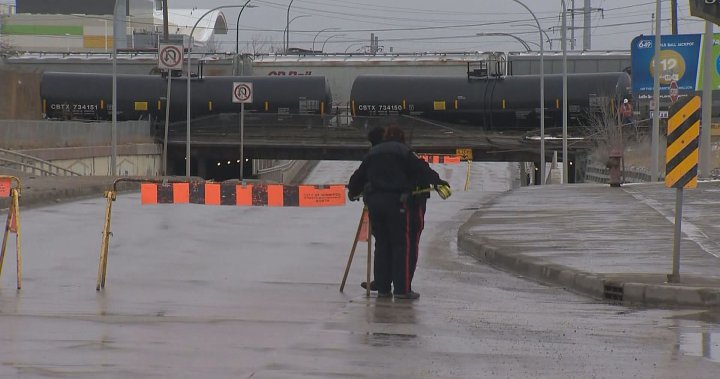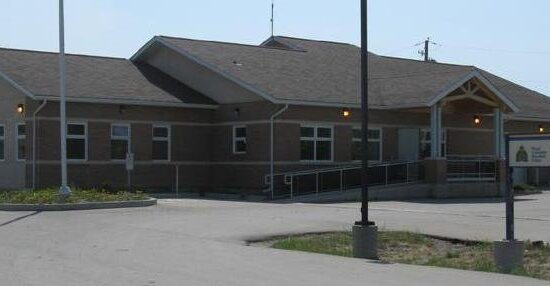
A train derailment closed a stretch of a busy Winnipeg thoroughfare Friday and prompted Manitoba’s Progressive Conservative government to refloat the billion-dollar idea of relocating rail lines outside the city.
Several rail cars carrying bitumen left the track near a rail overpass that runs over McPhillips Street — a major route for commuters in the city’s northwest.
There were no injuries and no signs of any spills, the Winnipeg Fire Paramedic Service said. The street was expected to remain closed for at least until the evening to allow for an inspection of the overpass.
Premier Heather Stefanson said the derailment should reignite consideration of rail relocation — an idea that has been discussed for decades as a way to increase safety and remove large rail yards that serve as barriers between neighbourhoods.
“It hasn’t been something that has been on our radar for some time,” Stefanson said.
“But when something like this happens, you know, you’re thankful that no one got injured but it does bring it to the forefront.”
Stefanson said she discussed the issue with Winnipeg Mayor Scott Gillingham at a community event Friday morning and talks will continue with rail relocation as part of a bigger discussion on the future of the city.
“I’m willing to have those discussions to see what that might look like … and what does Manitoba look like 10, 20, 30, 50 years from now as a transportation hub of North America.”
The idea of moving rail lines has been brought up since the 1960s, and rough price estimates have pegged the cost well upwards of $1 billion.
The former NDP government promised in 2016 to spend $400,000 on a study on rail relocation to look at the cost and feasibility. The province hired former Quebec premier Jean Charest to lead the effort.
Months later, the Progressive Conservatives were elected and then-premier Brian Pallister axed the plan.
Gillingham said the city is interested in studying the idea and has indications that federal funding would be available for a study.
Incremental steps such as moving smaller spur lines could be more feasible in the short term than trying to move large rail yards and major lines, the mayor added.
“That would take a lot of discussion and many, many years and billions of dollars, and so I’m most interested right now in what could be done in the shorter term.”
© 2023 The Canadian Press
















